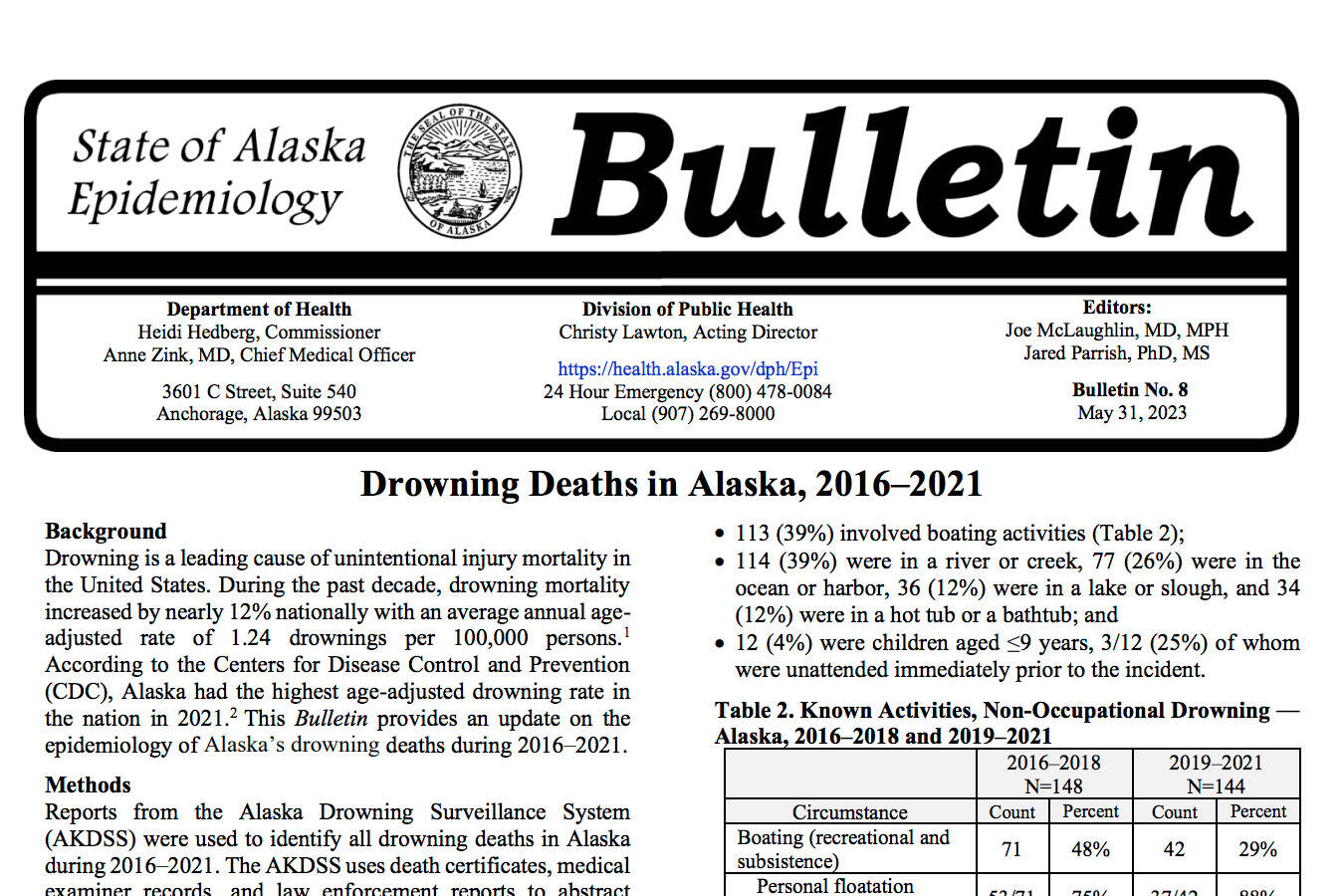Alaska led the nation in the rate of drowning deaths in 2021, according to an Epidemiology Bulletin published by the Department of Health on Wednesday.
The bulletin describes drowning as “a leading cause of unintentional injury mortality” in the United States. It says that nationally, the average number of drowning deaths has increased in the last decade. In Alaska, the drowning rate from 2016 to 2021 has “remained largely consistent,” but in 2021 Alaska had the highest drowning rate in the country.
The national age-adjusted average rate of drownings is 1.24 drownings per 100,000 people. In Alaska, in 2021, the corresponding statistic was 7.3. That rate was much higher in certain regions, like in the Southwest, which includes the Aleutian Chain, where the rate was 31.4, the Northern at 24.8 and the Southeast at 12.4.
The Gulf Coast region, which includes the Kenai Peninsula Borough, had 25 drownings between 2019 and 2021, for a rate of 10.2.
The release notes that a majority of non-occupational Alaska drownings occur in relation to boating, both for recreation and for subsistence. From 2016-2018, there were 71 such drownings, representing nearly half of all drownings in the state. From 2019-2021, there were 42, representing around 30%.
Though the rate of drownings while boating decreased between the two periods, the bulletin notes that the proportion of these drownings that involved people who weren’t wearing personal flotation devices increased significantly.
Other activities connected to drownings were swimming, which accounted for around 20% of Alaska drownings; the use of ATVs and snowmachines, which accounted for 15%; and bathing at 14%.
From 2016-2018, 5% of drowning deaths were attributed to bathing, and the 14% in the more recent period was described as a “notable increase.” These deaths resulted from either a medical condition or the loss of consciousness, it says. Most of those deaths involved the use of alcohol or drugs.
The majority of drownings in Alaska affect men and those in rural areas. In the more recent period, more than four times as many men died in drownings as women. The majority of deaths were in the age groups 15-24 and 25-44.
To reduce the number of drownings in the state, the bulletin says that children should be closely supervised around water, and that they should be taught how to swim — including how to transition into a float on their backs.
While boating, the bulletin sways, personal flotation devices should be worn, alcohol and drugs should not be used, weather forecasts should be consulted, and users should have “a clear understanding of cold-water safety practices.” A “Float Plan” can be provided to a trusted person with information about the vessel and its itinerary for reporting an emergency if a check-in is missed.
Children’s swimming lessons are being offered this summer at the Kenai Central High School Pool, the Skyview Middle School Pool and at the Nikiski Pool. An adult learn to swim program is run by Top of the World Swimming. For more information, visit facebook.com/SoHiPool, facebook.com/NorthPeninsulaRecreation, or facebook.com/towsalaska
For more information about boating safety and children’s water safety education visit dnr.alaska.gov/parks/boating.
Reach reporter Jake Dye at jacob.dye@peninsulaclarion.com.

